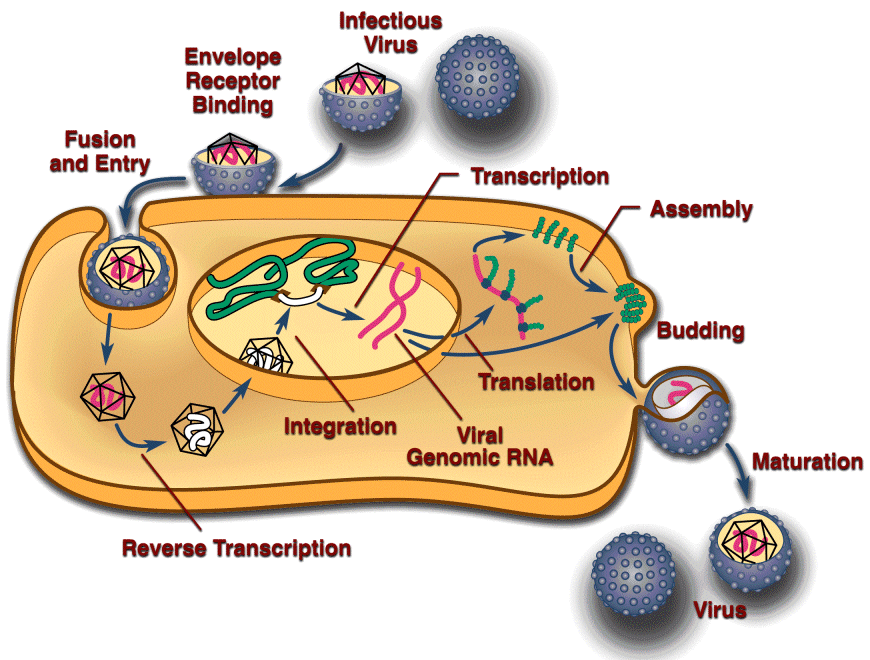Retroviridae
Retrovirus tools
Graphical Genome Viewer
Other tools
Related resources
Other NCBI resources
Welcome to the collection of resources at NCBI specifically designed to support the retrovirus research community.
The family Retroviridae is composed of numerous non-icosahedral, enveloped viruses which possess two copies of a single-stranded RNA genome that has a short dimerized region. The Retroviridae are divided into two subfamilies, the Spumaretrovirinae and Orthoretrovirinae, of which the two defining hallmarks of replication are the reverse transcription of the genomic RNA into a linear double-stranded DNA copy and the subsequent covalent integration of this DNA into the host genome.
Retroviral genomes are non-segmented, of positive polarity, and typically between 7 to 12 kb long in size. All retroviral genomes consist of at least 4 genes, gag, pro, pol and env. The gag gene encodes the major structural polyprotein Gag and is all that is necessary and sufficient for the assembly non-infectious and immature viral-like particles. The viral protease is encoded by the pro gene and is responsible for facilitating the maturation of viral particles. Products of the pol gene include reverse transcriptase, RNase H and integrase while env is responsible for the viral surface glycoprotein and transmembrane proteins that mediate cellular receptor binding and membrane fusion. In addition, complex retroviruses such as HIV-1 encode accessory proteins that enhance replication and infectivity. More information on the biology of retroviruses is available in the online Retroviruses textbook.
HIGHLIGHTS OF THE RECENT LITERATURE
- "Structural biology: Aerial view of the HIV genome", Hashim M. Al-Hashimi et al, 2009 Nature 460, 696-698 (6 August 2009)
- "A new human immunodeficiency virus derived from gorillas", Jean-Christophe Plantier et al, 2009 Nature Medicine Published online: 2 August 2009



